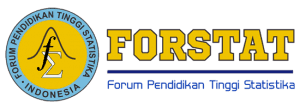ANALYSIS OF THE EFFECTIVENESS OF INFRASTRUCTURE DEVELOPMENT ON POVERTY LEVELS IN TANGERANG REGENCY IN 2024
Abstract
Poverty is defined as a condition in which a portion of the population lives with a monthly per capita expenditure below the poverty line. Addressing poverty remains a major challenge for sustainable development, and one strategic approach is infrastructure development. This study analyzes the effectiveness of education, health, and transportation infrastructure, as independent variables, in reducing poverty, as a dependent variable, in Tangerang Regency in 2024. The study employs multiple linear regression because it allows the simultaneous examination of the relationship between a single dependent variable and multiple independent variables. The results indicate that the three infrastructure variables simultaneously significantly affect poverty levels, as shown by an F-statistic of 3.572 and a p-value of 0.02813 at the 5% significance level. The coefficient of determination (R²) of 0.3001 suggests that infrastructure development explains 30.01% of poverty reduction, while other factors influence the remaining 69.99%. However, the partial test results show that none of the infrastructure variables individually has a significant effect on poverty. These findings suggest that infrastructure development contributes to poverty alleviation, though its sectoral impact remains limited. Enhancing equity and improving quality across infrastructure sectors are therefore essential to maximize and broaden its benefits.
Downloads
Copyright (c) 2025 VARIANCE: Journal of Statistics and Its Applications

This work is licensed under a Creative Commons Attribution-NonCommercial-ShareAlike 4.0 International License.



 Editorial Team
Editorial Team
 Peer Review Process
Peer Review Process Focus & Scope
Focus & Scope Open Acces Policy
Open Acces Policy Privacy Statement
Privacy Statement Author Guidelines
Author Guidelines Publication Ethics
Publication Ethics Publication Fees
Publication Fees Copyrigth Notice
Copyrigth Notice Plagiarism Screening
Plagiarism Screening Digital Archiving
Digital Archiving





